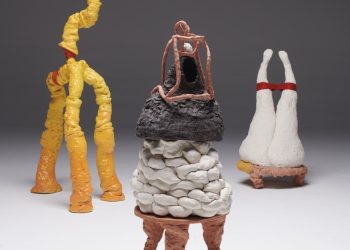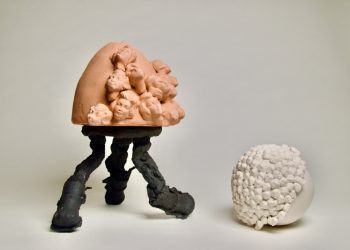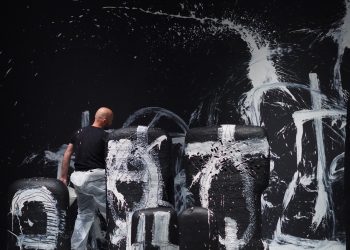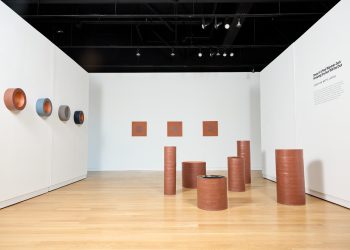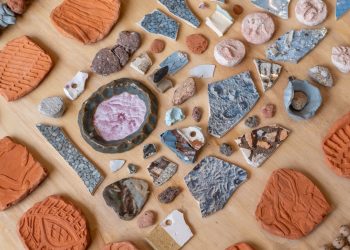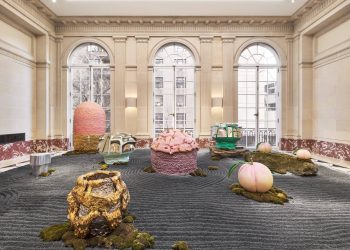





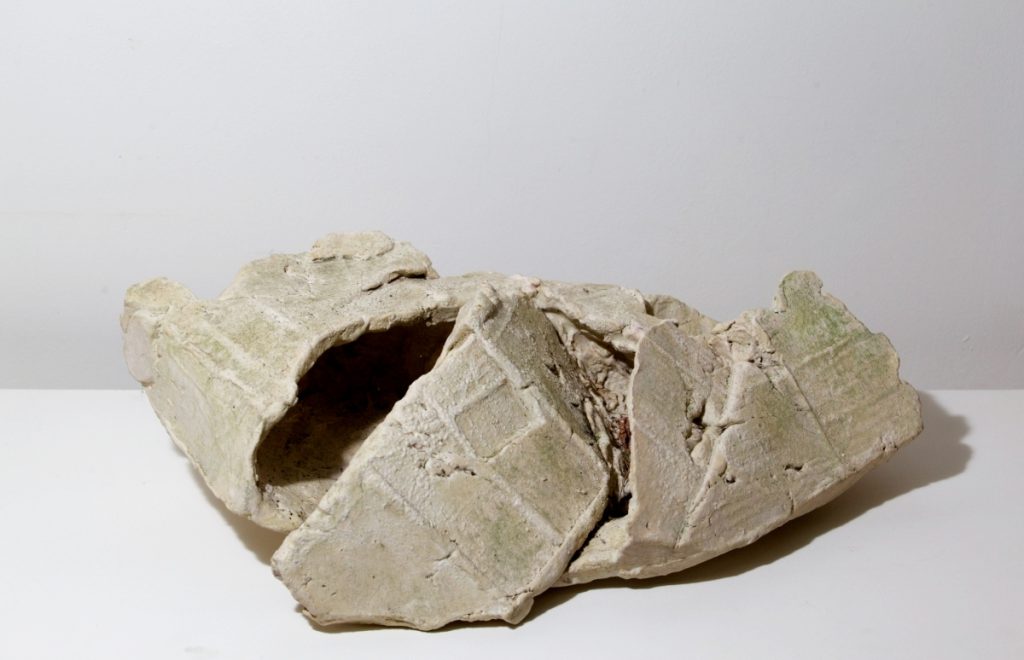


Ewen Henderson: Late Abstractions, 1998-1999
Many of the best potters were initially painters. When Ewen Henderson (1934-2000) went to study ceramics at Camberwell in the late 1960s, he brought a painter’s freedom to clay, using it as an open canvas for his ideas. His early pots showed his abilities with colour as well as hand-built form, the surfaces increasingly painterly as he developed stains and oxides which coloured and often blistered surfaces. The pieces eventually opened out into more intricate structures as he improvised with planes, edges and junctures, a spatial exploration at once delicate and powerful. There was a watercolourist’s sensitivity to texture and hue, his constructions reflective of various landscapes, of a wide range of found objects and shapes that were fertile with suggestion.
The work, constantly evolving, was as restless and energised as its maker, an art that posed questions rather than easy answers. As he remarked; “Every beginning has an infinite number of endings, and more excitingly, every ending has a number of new beginnings”, the best description of his physical approach. Henderson was essentially a collagist, a playful experimenter with clay, in his later years developing these ideas on paper too, drawn to the inherent layers, overlaps and spatial intrigues of complex forms.
Text by David Whiting
Captions
- Crumpled Zig Zag, 1998/9, ceramic, 38 x 71 x 40 cm. Photo © Philip Sayer.
- Abstraction II, 1998/9, ceramic, 27.5 x 29.5 x 25cm. Photo © Philip Sayer.
- Arrow of Desire, 1998/9, ceramic, 31 x 68 x 38cm. Photo © Philip Sayer.
- Zig Zag, 1998/9, ceramic, 39.5 x 46 x 27 cm. Photo © Philip Sayer.
- Zig Zag, 1998, ceramic, 42 x 57 x 27cm. Photo © Philip Sayer.
- Abstraction I, 1998/9, ceramic, 19 x 29 x 16cm. Photo © Philip Sayer.
- Slab Series, 1998/9, ceramic, 16.5 x 53 x 32cm. Photo © Philip Sayer.
- Abstraction II, 1998/9, ceramic. Photo © Philip Sayer.
- Bony Abstraction, 1998/9, ceramic, 11 x 32 x 15.5cm. Photo © Philip Sayer.



